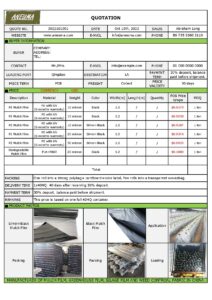Introduction
UV-B radiation, a component of the sun’s natural light spectrum, plays a crucial role in plant development. However, excessive exposure can lead to DNA damage, mutations, and hindered growth. This makes safeguarding crops from harmful UV-B rays imperative for a thriving harvest.
Understanding UV Radiation
UV radiation is categorized into three types: UV-A, UV-B, and UV-C. UV-B, with wavelengths between 280 and 315 nanometers, impacts plants the most. Prolonged exposure leads to cellular stress and inhibits photosynthesis, affecting overall growth.
The Role of UV-B Blocking Films
Greenhouse film has revolutionized modern agriculture, but UV-B blocking films play a pivotal yet often underestimated role. These films are like silent guardians, shielding our precious crops from the harmful effects of UV-B radiation. In essence, they act as a shield against the sun’s sinister side.
The magic lies in the intricate chemistry of these films. Crafted with precision, they contain UV stabilizers and absorbers that intercept and neutralize harmful UV-B rays. This shield is essential, as excessive UV-B exposure can cause cellular damage, disrupt photosynthesis, and stunt plant growth.
Furthermore, UV-B blocking films extend their benevolent embrace by regulating temperature, optimizing humidity, and preventing the loss of precious moisture. They are the unsung heroes in the world of greenhouse agriculture, ensuring bountiful harvests and healthier crops.
Benefits of UV-B Blocking Films
Reduced DNA Damage and Mutations in Plants
UV-B blocking films significantly decrease DNA damage in plant cells. By mitigating the harmful effects of radiation, these films promote healthier, more resilient crops.
Improved Photosynthesis and Growth
With a controlled UV-B exposure, plants can focus on efficient photosynthesis, leading to better growth rates and higher yields. This translates to a more productive and profitable harvest.
Types of UV-B Blocking Films
Organic UV-B Blocking Films
Derived from natural compounds, organic UV-B blocking films provide a reliable barrier against harmful radiation. Their eco-friendly composition ensures safe cultivation practices.
Inorganic UV-B Blocking Films
These films incorporate specialized minerals that effectively absorb and scatter UV-B rays. They offer a durable and long-lasting solution for UV-B protection.
Installation and Application
Proper application of UV-B blocking films is crucial for their effectiveness. They should be evenly spread over the crop canopy, ensuring no gaps or overlaps. Additionally, considering the specific requirements of different crop types is essential for optimal results.
Case Studies: Success Stories
In farms worldwide, the implementation of UV-B blocking films has led to remarkable improvements. For instance, a vineyard in California saw a 20% increase in grape yields after adopting this technology. Similar success stories highlight the transformative impact of UV-B protection on crop cultivation.
Sustainable Farming with UV-B Blocking Films
Greenhouse film serves as a protective shield, but UV-B blocking films elevate its prowess. These specialized layers, often imbued with additives like hindered amine light stabilizers (HALS), act as sentinels against harmful ultraviolet radiation. The UV-B spectrum, ranging from 280 to 315 nanometers, can wreak havoc on plant life, impeding growth and compromising yields.
These films, meticulously engineered, intercept this detrimental radiation, allowing only the essential wavelengths to permeate. The result? A cocooned environment that fosters optimal photosynthesis without subjecting plants to the detrimental effects of excessive UV-B exposure. Furthermore, the integration of UV-B blocking technology extends the longevity of greenhouse films, ensuring seasons of reliable protection for crops.
In summation, the integration of UV-B blocking films represents a quantum leap in greenhouse technology, safeguarding plants from the insidious effects of UV-B rays while fortifying the durability of the very shield that nurtures their growth.
Future of UV-B Blocking Films
Continuous research endeavors are tirelessly working towards the refinement of UV-B blocking technology. Advancements in material science and pioneering application methods are on the horizon, promising heightened levels of UV-B protection. This bodes well for the future of UV-B blocking films within the realm of modern agriculture.
In summation, the significance of UV-B blocking films in safeguarding crops against the detrimental impacts of radiation cannot be overstated. To fully harness their capabilities, it is imperative to grasp their fundamental role, the advantages they offer, and the correct methodologies for their implementation. With an ever-evolving landscape of innovations, these films are poised to transform the agricultural landscape, ushering in an era of healthier, more bountiful harvests that will endure for generations to come.

